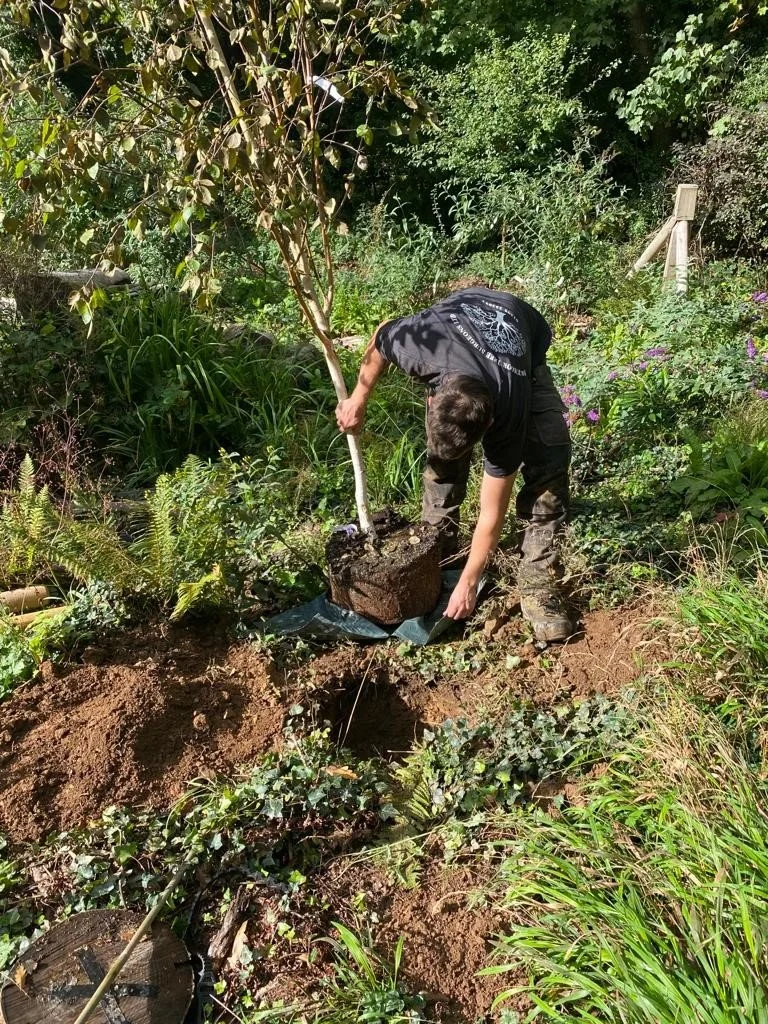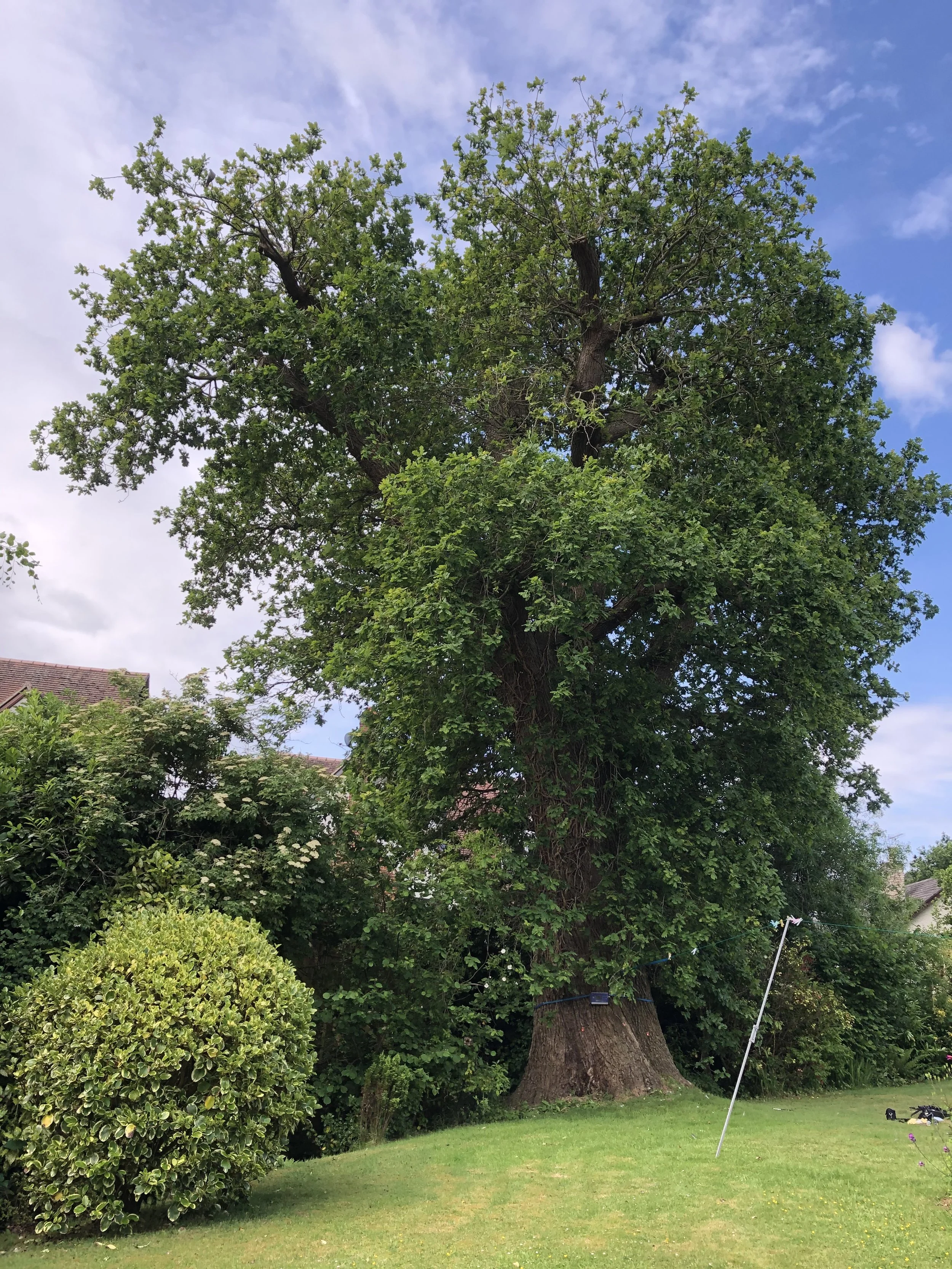Birch trees (specifically the Silver Birch, Betula pendula) are one of our most identifiable trees, with their elegant shape and distinctive bark catching the eye and looking at home both in the garden and in the wild. Like all of our native trees, Birches have many uses - both historic and modern - as well as a rich and fascinating mythology.
Unstoppable Force Vs. Immovable Object: Getting to the Root of the Issue
An interesting conundrum recently presented itself to consultant Graham: a listed wall, built in Exeter's local Heavitree Stone, had started to bow under pressure from the roots of a protected veteran Holm Oak, believed to have been planted at the same time the wall was constructed. Through careful assessment and conversation a way was found to preserve both wall and tree, protecting two local pieces of heritage in one go.
Quick Guide to Tree Planting
October to April is the perfect time of year to plant new trees in your garden! The cooler, wetter weather makes caring for the new trees much easier, and not being in flower or leaf means that the trees have more energy to spare for the process of being moved and planted. Our Quick Guide to Tree Planting gives you a brief overview of the tree planting process, so if you have some planting plans in mind read on to learn more!
Bats & Tree Surgery: What Happens?
Did you know that before starting any job both our contracts manager and our team on the day will assess your trees and the surrounding area for wildlife? As well as keeping an eye out for nesting birds, we also look for habitat that might be used by hedgehogs, dormice and bats, amongst other creatures, and this is factored into our work plans. Recently, our lead climber Ben discovered an active bat roost in a tree whilst performing this assessment; it’s been a long time since we’ve come across any bats, and it prompted us to put together a little information on bats in Devon and the ways tree surgeons respond to them.
Devon's Ancient Rainforests: Mist, Mystery, History...and a Precious National Resource
You may have come across mention of Devon’s ancient rainforests in the news (LINK), or perhaps you know them personally and have visited one of the three miniature forests located on Dartmoor: Wistman’s Wood, Blackator Copse and Piles Copse. Known for their distinctive, gnarled oak trees, festooned with moss and lichens, and popular in local folklore, these woodlands are actually fragments of an increasingly rare part of our landscape.
Biosecurity Update: Phytophthora pluvialis
P. pluvialis is a fungus-like pathogen which affects a variety of trees but most commonly conifers such as pine, fir and spruce. Since October P. pluvialis has been found in other parts of Cornwall and in Devon, as well as a few isolated cases in the north of the country and Scotland, resulting in a demarcated area being drawn around areas known to be experiencing infections.
Monterey Pines: Mountain Kings of the South West
The first few months of this year has seen Dartmoor Tree Surgeons working with an unusually high number of Monterey Pines. These distinctive trees have become a real feature of the Devon landscape , often become very popular within their communities. Read on to learn more about the history of these “mountain kings”, as well as the best way to keep an eye on any you might be responsible for.
New Lease of Life for Sidmouth Veteran Oak
Mistletoe in Devon - and a Merry Christmas!
As it’s that time of the year I wanted to write a festively themed piece to close the blog out for the year. This one’s a bit of a cheat as my chosen species isn’t a tree, but it is a woody plant and it’s one that almost everyone will see at Christmas. Mistletoe is one of our most mysterious plants, with an enduring role in our folklore and festive traditions. As well as a few musings on this subject you can also find out how to introduce mistletoe into your own garden.
Mobray Court, Exeter
Dartmoor Tree Surgeons have worked at Mobray Court in Heavitree for some years, undertaking regular safety inspections for the management company. The largest works undertaken to date at Mobray Court involved the removal of a very large Turkey Oak which had succumbed to honey fungus. We captured the dismantling of this tree using a timelapse camera which ran for the three days of the main take-down.








